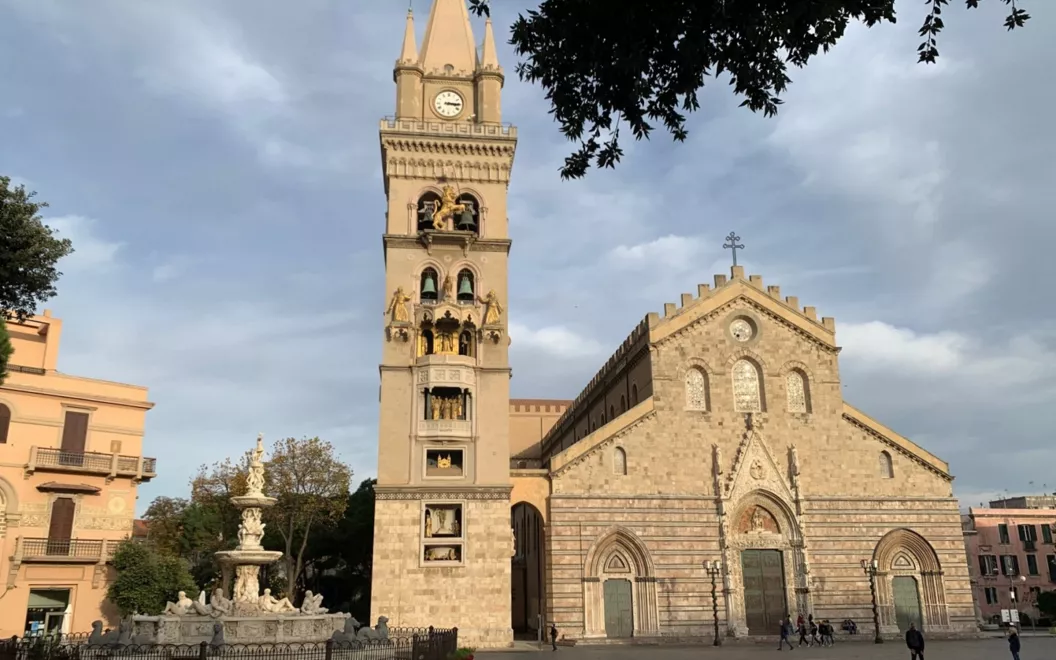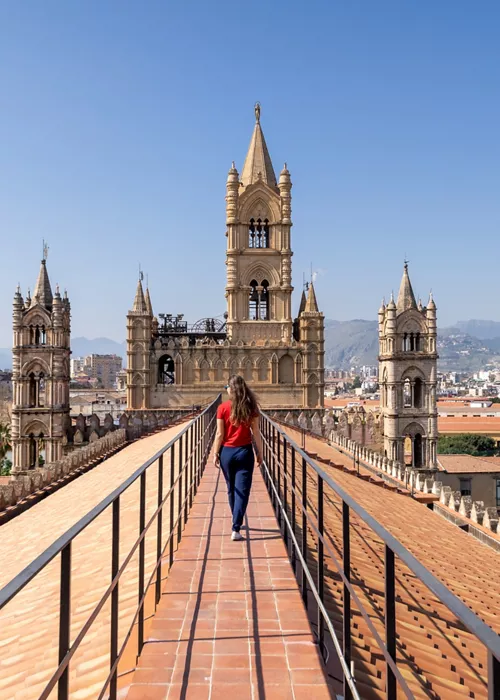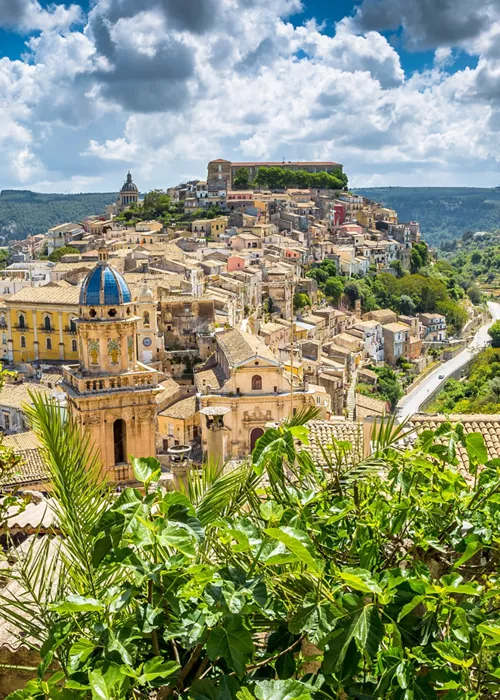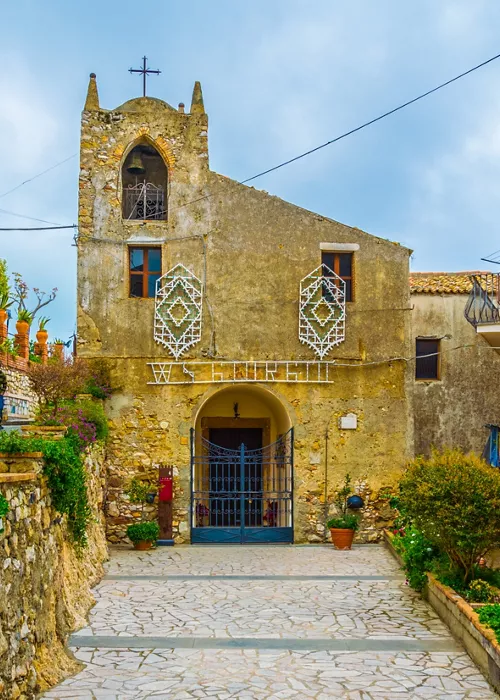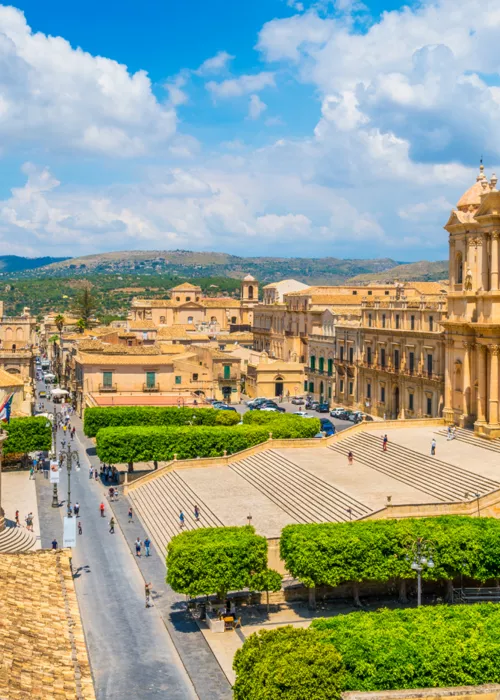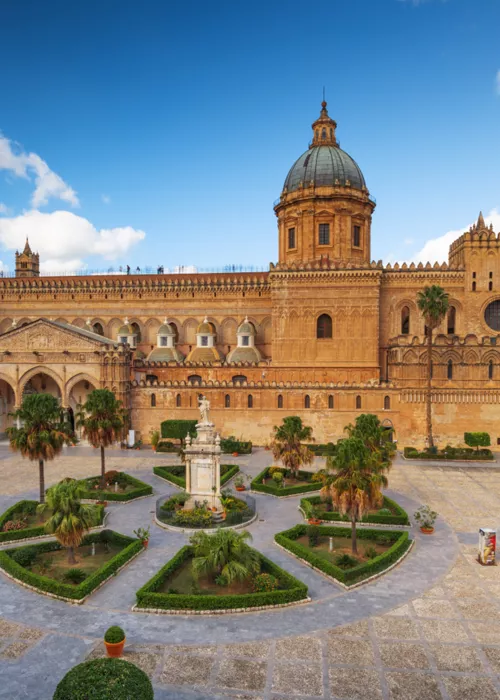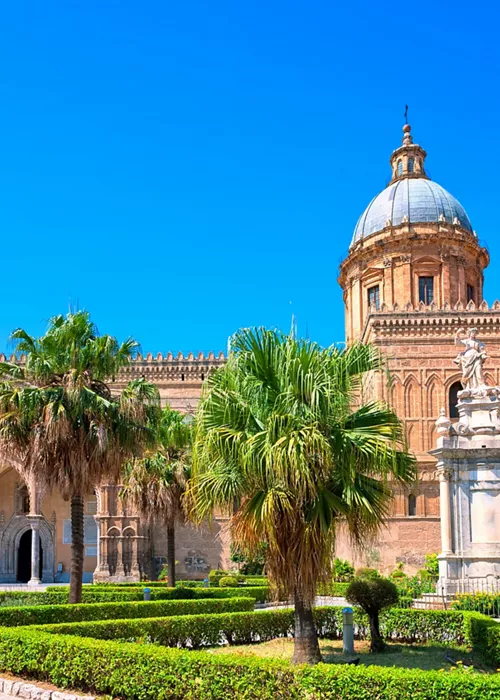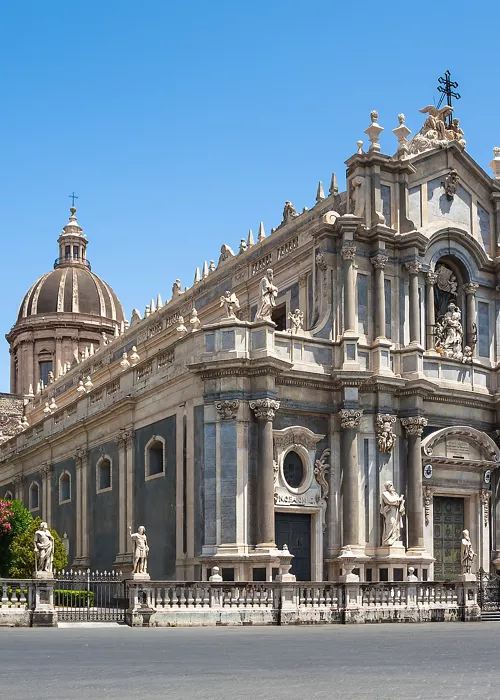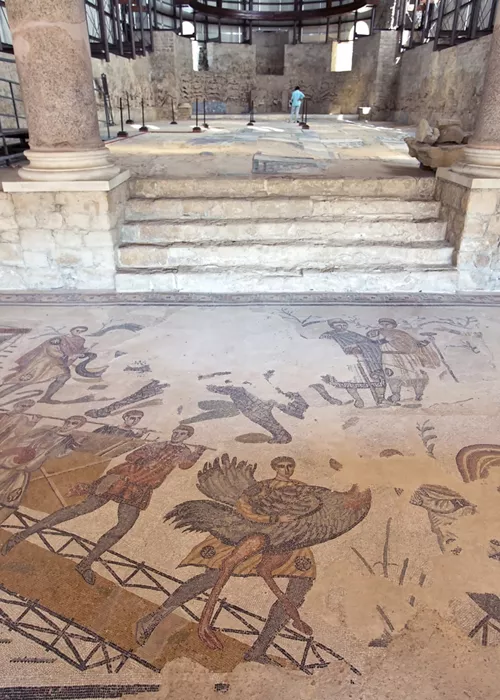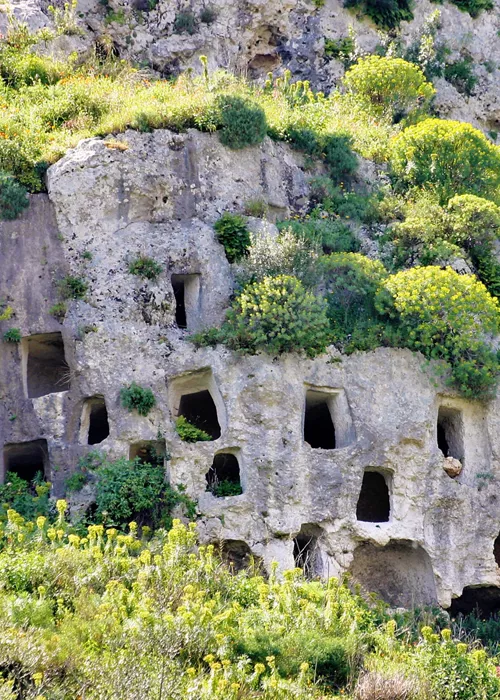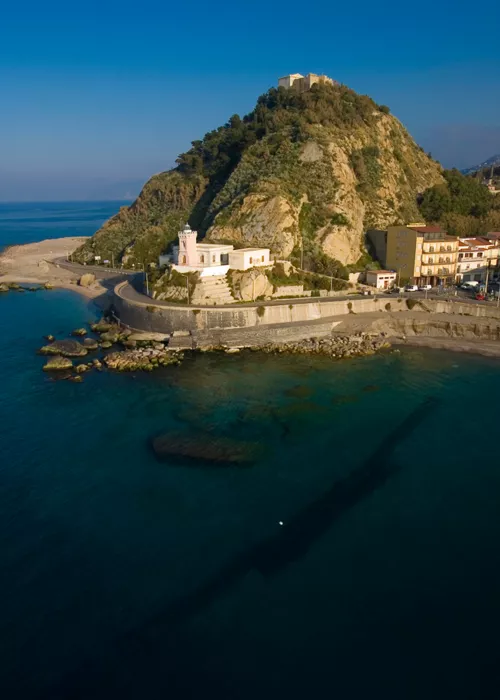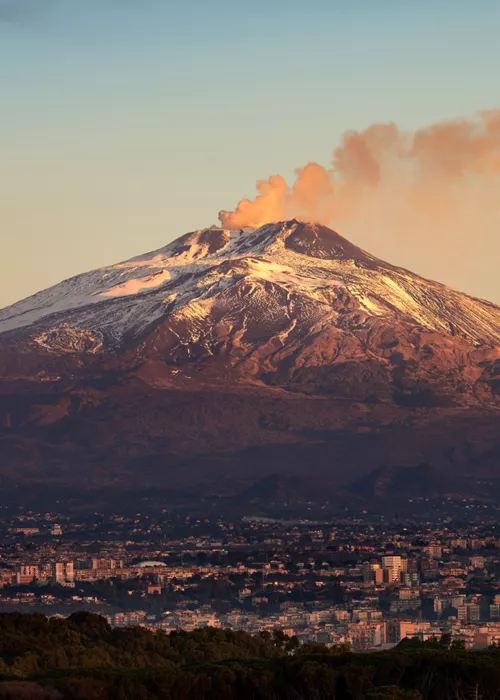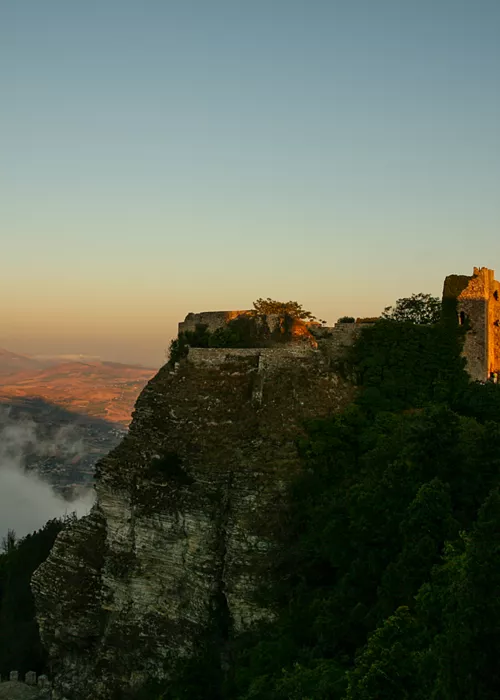In Messina, in Piazza Duomo, you can find the largest and most complex astronomical clock in the world
4 minutes
At noon, every day of the week, in Piazza Duomo, in the heart of Messina, you can witness the extraordinary spectacle of the largest and most complex astronomical clock in the world.
With the musical background of Schubert's Ave Maria, the 54 mechanical sculptural figures in bronze are animated, positioned in carousels on several levels of the bell tower of the Cathedral of Santa Maria Assunta, from the Norman era (it was consecrated at the end of the 12th century AD). The roaring lion, shaking its tail and head while waving the flag, a symbol of the strength and courage of the people of Messina, marks the beginning of the sophisticated mechanism that recounts, between myth, legend and history, the soul of the City of the Strait also called the "Gate of Sicily".
Rebirth in splendour from the ruins of the Great Earthquake
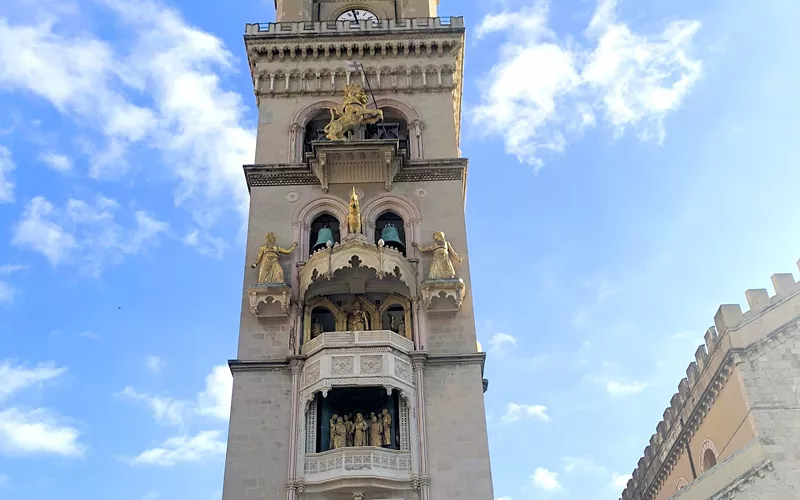
The bell tower, 60 metres high, has undergone numerous restorations over the centuries. The first major reconstruction project, designed by architect Andrea Calamech, took place in the second half of the 16th century. Following damage caused by the earthquake in Calabria in 1783, it was demolished on account of its unsafe condition, to be rebuilt in a new form at the end of the 19th century according to a design by Palermo-born Francesco Valenti.
The bell tower with the mechanical clock that today attracts admirers from all over the world was thus rebuilt in the city's renaissance phase, after the terrible earthquake of 1908. Commissioned by Archbishop Angelo Paino, the Ungerer Company of Strasbourg built it on the designs of the architect Valenti, in just three years, completing it in 1933, with 8 bells and equipped with the only animated mechanical clock in the world.
This extraordinary work was designed by the masters Théodore and Alfred Ungerer, successors of Jean Baptiste Schwilgué, the clockmaker and mathematician who, a century earlier, had restored the Renaissance-era astronomical clock kept in Strasbourg Cathedral. The central mechanism system moves the indexes of the dials and regulates the sound effects and movements of the figures.
Entertainment and sounds to celebrate Messina's history
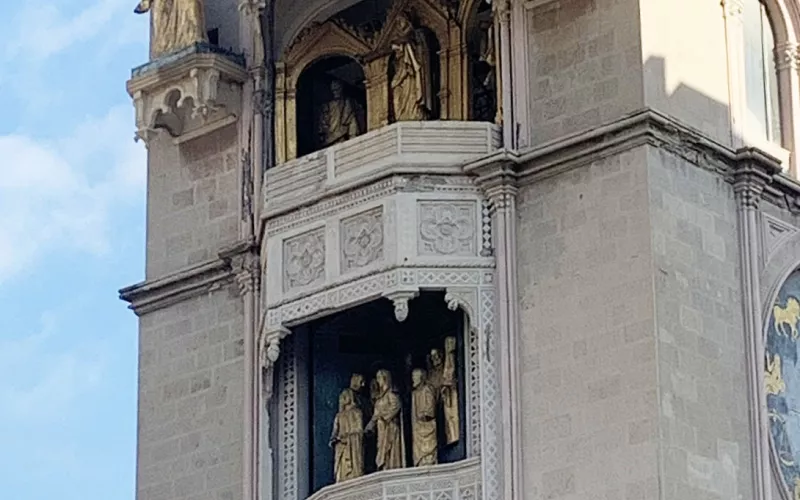
The scenic mechanical clock of the Cathedral of Messina has two facades. On the side facing east, towards the main entrance to the Cathedral, are the astronomical mechanisms. At the top, the two-tone sphere is positioned, which depicts the half-white and half-black moon phases. Below, the planetarium reproduces the solar system and the zodiac. Then, on the lower level, there is the perpetual calendar with the statue of the angel on the left, which indicates with an arrow the day and month of the year, always kept up-to-date.
On the main façade, in front of the Cathedral Square, you can admire the extraordinary theatrical mechanism that springs into life at midday. It tells the story of the City of Messina, amidst memories and popular tradition, by means of complex animated symbolism lasting just under a quarter of an hour. The big show starts at noon. The crowing rooster and the roaring lion are the first to be activated, attracting the attention of the people of Messina. Then it is the turn of Dina and Clarenza: the two heroines of the Sicilian Vespers, who fought in defence of the city during the siege of the troops of Charles I of Anjou, in 1282, ring the bells.
An important scene, in the lower carousel, is related to the Patroness of Messina: it represents the Ambassadorship to Our Lady of the Letter. The painting shows, as tradition has it, St. Paul with the Messina ambassadors who bring the citizens' greetings to Mary, mother of Jesus and receive in return a missive, on a parchment rolled up and tied with a lock of Our Lady's hair, whose message, in Latin, was engraved on the base of the statue of Our Lady welcoming sailors in the harbour: "I bless you and your City".
On the lower levels, 4 biblical scenes are represented: the Nativity, the Epiphany, the Resurrection of Christ and Pentecost, each animated at the corresponding time of the year.
Just before the frame, the foundation of the Church of Montalto is represented, which rises slowly within the perimeter drawn by a flying dove. Legend has it, in fact, that the Sanctuary of Montalto, clearly visible from the cathedral square high up on the left for those looking at the Bell Tower, was built on the spot indicated by a dove, as requested by the Virgin Mary in a dream to a friar, at the end of the 13th century.
One show every hour
?wid=800&hei=500&fit=constrain,1&fmt=webp)
The complex and fascinating mechanism of the Astronomical Theatrical Clock of Messina manifests itself in all its engineering perfection, its aesthetic magnificence and the elegance of its automated figures, at midday. The Bell Tower of the Cathedral is, however, the undisputed protagonist of the city every hour, marking time with the spectacle of the two carousels placed at the base.
On the penultimate level is the scene of the 4 ages of life – childhood, youth, maturity, old age – which move every quarter of an hour, to remind onlookers that death spares no one.
Finally, the carousel of the days of the week, represented by the chariots led by the seven Roman gods/planets from which they derived their name, each showing themselves on the day in question.
Tips
A guided tour inside the astronomical clock is suggested while the figures are in motion, so that you can observe the complex and fascinating mechanism.
Openings for groups by reservation at times other than official opening hours are possible by sending an email in advance to : info@messinarte.it or messinarte@tiscali.it.
Content based on information provided by our Partner, Ornella Reitano

